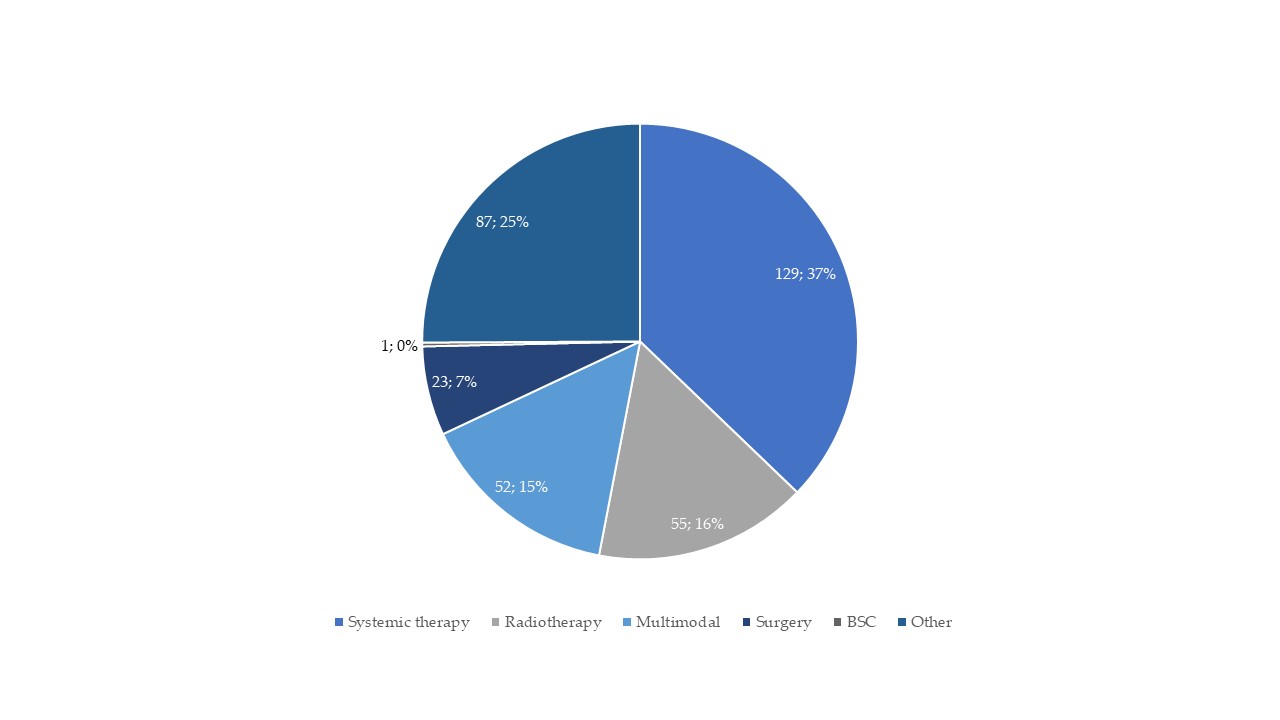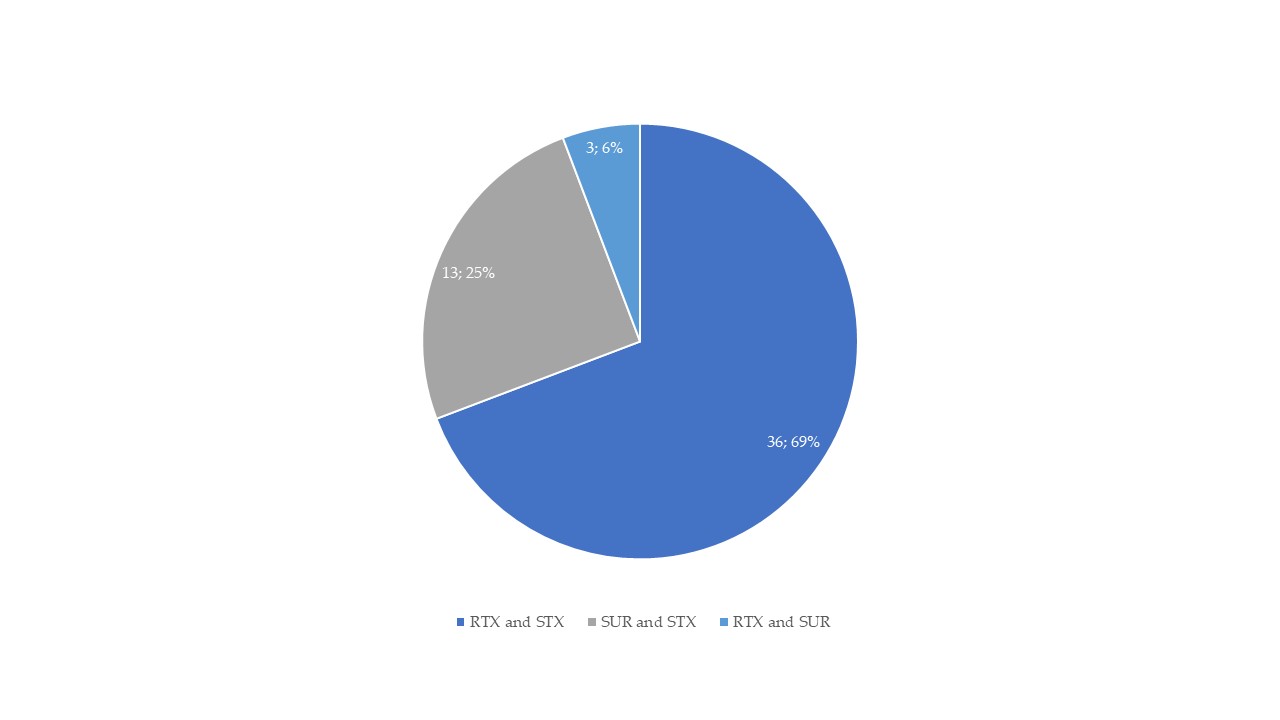Recognition and treatment recommendations of oligometastasis in multidisciplinary tumor boards
Sebastian M. Christ,
Switzerland
PO-1572
Abstract
Recognition and treatment recommendations of oligometastasis in multidisciplinary tumor boards
Authors: Sebastian M. Christ1, Philip Heesen2, Urs J. Muehlematter3, Kaspar Pohl2, Gabriel William Thiel2, Jonas Willmann1, Maiwand Ahmadsei1, Tiuri E. Kroese1, Michael Mayinger1, Panagiotis Balermpas1, Andreas Wicki4, Nicolaus Andratschke1, Martin Huellner3, Matthias Guckenberger1
1University Hospital Zurich (USZ); University of Zurich (UZH), Radiation Oncology, Zurich, Switzerland; 2University of Zurich (UZH), Faculty of Medicine, Zurich, Switzerland; 3University Hospital Zurich (USZ); University of Zurich (UZH), Nuclear Medicine, Zurich, Switzerland; 4University Hospital Zurich (USZ); University of Zurich (UZH), Hematology and Oncology, Zurich, Switzerland
Show Affiliations
Hide Affiliations
Purpose or Objective
Growing evidence supports a combined modality treatment strategy including definitive local therapy of all macroscopic cancer sites for patients with oligometastatic disease. However, the lack of phase III trials and uncertainties with respect to patient selection and details of multimodality treatment highlight the importance of the multidisciplinary tumor board (MDT) in the decision-making process. This study aimed to assess the patterns-of-use of MDTs for oligometastatic patients, and analyze the recognition and treatment recommendations for oligometastatic patients on an MDT level at a large comprehensive cancer center.
Material and Methods
For this retrospective single-center cross-sectional assessment, oligometastatic patients were identified by screening of oncological positron emission therapy (PET) and concurrent brain scans conducted at our center between January and December 2020. MDT discussions and recommendations within four weeks of the imaging diagnosis of oligometastatic disease were quantified and analyzed.
Results
A total of 787 oligometastatic cases were identified. The most common primary tumors were lung cancer and mesothelioma, skin cancer, and prostate cancer with 231 (29%), 160 (20%), and 84 (11%) cases, respectively. Almost half of the cases (46%) had one metastasis on imaging only. More than half (56%) of all oligometastatic cases were discussed at an MDT within four weeks following imaging-based diagnosis of oligometastatic disease. Radiotherapy and surgery were part of the recommended therapeutic regimen in 16% and 7% of cases, respectively, and a multimodal approach including some form of definitive local therapy was recommended in 15% of cases (see Figure 1 and Figure 2). On logistic regression analysis, only oligometastatic skin cancer was significantly associated with a recommendation for definitive local therapy, whereas the number of oligometastases did not influence the recommendation of definitive local therapy.
Conclusion
More than half of oligometastatic cases in this cohort were discussed in MDTs and the treatment recommendation included the use of definitive local therapy in a significant number of these cases. Further research is required to better identify patient and disease characteristics of oligometastatic cancer patients, who benefit most from a combined modality treatment strategy.

